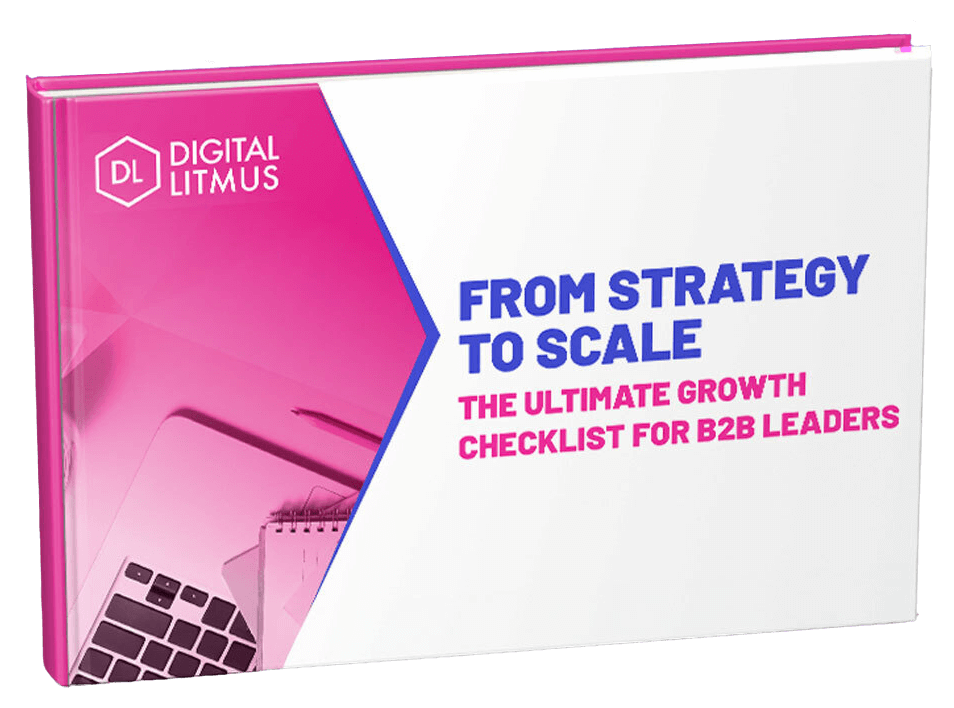Training providers today are navigating uncharted waters. The landscape has shifted dramatically. Buyer journeys no longer follow predictable paths, learners demand increasingly sophisticated experiences, and AI-powered alternatives are reshaping what's possible in education delivery.
It's no wonder many training businesses feel caught in a reactive cycle. Rather than building momentum with connected strategies, they're responding with what we might call "random acts of marketing" - disconnected tactics that drain resources while delivering inconsistent results.
Industry-Specific Challenges
Training businesses face unique challenges that generic growth strategies simply don't address. Corporate buyers increasingly demand hard metrics showing business impact, not just learning outcomes. Many providers struggle with feast-or-famine cycles, with Q4 and Q1 often seeing budget flushes while summer months bring significant drops in bookings. Post-pandemic, learners expect flexibility between in-person, virtual, and self-paced options within the same programme, demanding significant operational flexibility.
With the rapid growth of low-cost digital content libraries and AI-powered learning tools, many training offerings have become similar and less distinctive. Meanwhile, centralised procurement processes have added extra layers between training providers and end users, often making sales cycles much longer.
The reality? Most training providers are leaving significant growth opportunities on the table. Recent industry data shows that while the global training market is expanding, projected to reach £385 billion by 2026, individual providers struggle with inefficient lead generation, poor conversion rates, and challenges in scaling their operations.
This guide explores how training providers can build a connected growth approach that aligns marketing, sales, and operations to drive sustainable scale with less friction.
1. Building Strategic Foundations
Start with clear, measurable growth goals
Vague aspirations like "increase course bookings" aren't enough. High-performing training businesses set specific, measurable targets across several key areas. They track new client acquisition broken down by important segments, identify existing client expansion opportunities, monitor course fill rates alongside efficiency metrics, and establish clear benchmarks for marketing and sales conversion. These targets shouldn't live in isolation. They need to cascade through your organisation, with marketing, sales and delivery teams all working towards shared definitions of success.
Understand your buyers at a deeper level
The training sector faces a particular challenge: multiple decision-makers and influencers in the buying process. Beyond basic demographics, effective buyer personas must capture much more detailed information. You need to understand the professional challenges and daily pressures your buyers face, how they prefer to consume content, the complex decision-making processes that drive their choices, and the specific objections that might prevent purchase. This deeper understanding transforms your marketing from generic messaging to targeted communications that really connect with specific audience segments.
Map the competitive landscape strategically
Most training providers have a surface-level understanding of competitors but haven't thoroughly analyzed where they can truly stand out. To really set yourself apart, you need to dig deeper. Look at where your competitors are focusing their content and thought leadership efforts. Find gaps in the market where you can build authority and establish your unique position. This strategic analysis provides a foundation for a unified marketing strategy that helps you stand out in a crowded marketplace.
2. Creating a Content Engine for Sustainable Growth
Developing a content strategy that delivers
Start by mapping content to specific business objectives rather than creating content for its own sake. Your strategy should include awareness content that establishes your expertise and positions you as a thought leader. Build consideration content that showcases your unique approach and methodology. Create decision content specifically designed to overcome common objections and drive conversion. This framework ensures each piece of content serves a specific purpose rather than merely filling a calendar, creating a purposeful journey for your prospects.
SEO: Navigating the AI-transformed search landscape
While many training providers dabble in SEO, few approach it with the careful attention needed to drive significant organic growth. The search landscape is undeniably changing. AI-generated results are increasingly prominent, yet substantial opportunities remain for training providers who adapt their approach.
A forward-thinking SEO strategy includes keyword research based on what people are actually searching for, creating content clusters around key service areas that show genuine expertise, and creating experience-based content that AI can't replicate. Search engines still reward authentic expertise and depth of insight, particularly content that shows human expertise and practical knowledge that AI alone simply cannot provide.
Content that converts: Beyond thought leadership
Thought leadership has its place, but conversion-focused content is what ultimately drives revenue. Build a library of client success stories that showcase measurable outcomes. Develop comparison content that thoughtfully addresses alternative approaches while highlighting your unique strengths. Create ROI-focused content that builds a compelling business case for your training. By building a systematic content engine with these elements, you create a sustainable source of qualified leads without constantly increasing your paid media spend.
3. Website Optimisation for Training Provider Growth
Website architecture for education businesses
Training provider websites have unique requirements that go beyond standard corporate sites. They must clearly segment for different audience types, showcase course content in a structured way, build credibility through social proof, and provide clear conversion pathways for different buyer types.
Corporate L&D buyers typically search for different information than individual learners. A senior learning manager might be concerned with implementation methodology and measurable outcomes, while an individual professional wants to understand specific skills they'll develop.
Effective training websites address this challenge through thoughtful information architecture. Rather than forcing all visitors through the same journey, they create clear pathways tailored to each audience segment, creating intuitive journeys that lead naturally to conversion.
Conversion optimisation: Small changes, big impact
Simple changes to your website can dramatically improve conversion rates. Clear, benefit-focused CTAs on every page guide visitors toward taking meaningful action. Strategically placed social proof elements provide reassurance at critical decision points. Simplified forms reduce friction and make it easier for prospects to take the first step.
We frequently see training providers making common conversion mistakes: burying contact information behind multiple clicks, using generic calls to action like "Learn More," and creating lengthy forms that discourage enquiries.
Form optimisation often yields the most dramatic improvements. Many training providers request excessive information too early in the relationship, creating unnecessary barriers. Progressive profiling, where you gather additional information over multiple interactions, typically increases conversion rates while still collecting the data you need.
These adjustments can often double or triple conversion rates without increasing traffic, making them among the highest-ROI improvements for training providers seeking growth.
AI-enhanced personalisation
The emergence of AI tools has created new opportunities for website personalisation that were previously available only to enterprise-level organisations. Dynamic content adaptation represents a powerful application, where systems analyse behaviour patterns and adjust content accordingly. Intelligent chat functions can understand context, answer complex questions about course offerings, and guide prospects to relevant information.
Personalised recommendations help prospects discover offerings they might otherwise miss, while audience segment targeting allows for tailored messaging based on visitor characteristics. These technologies allow you to create more relevant experiences without the resource overhead that would have been required even a few years ago.
4. Integrated Campaign Strategies for Training Providers
Moving beyond ad hoc marketing
Most training providers fall into reactive patterns of promotion based on course fill rates or approaching deadlines. This creates a boom-and-bust cycle that strains resources and yields inconsistent results.
Forward-thinking providers have transformed their results by shifting from course-based promotion to challenge-based campaigns. Instead of simply marketing an "Advanced Leadership Programme," they create multi-month campaigns around themes like "Building Resilient Teams in Uncertain Times." These themes connect with pressing concerns while incorporating multiple offerings and content assets.
Effective integrated campaigns for training providers require identifying the business challenge that resonates with your target audience, mapping campaign elements to the buyer journey, coordinating timing and messaging across channels, and designing multiple conversion paths that recognise different buyer preferences and stages.
Cross-Channel Integration That Works
Successful technical training providers demonstrate excellent channel integration. A comprehensive campaign promoting certification training might begin with a research-based whitepaper on skills gaps. This cornerstone content can then be promoted through targeted LinkedIn ads, a series of blog posts optimised for search, webinars discussing key findings, personalised emails, and case studies shared on social media.
Each element directs prospects toward a qualification tool that helps guide them to appropriate paths. This integrated approach ensures consistent messaging while leveraging the strengths of each channel.
Before implementing integrated campaigns, channels often compete rather than complement each other. A consistent, integrated approach typically increases qualified lead volume significantly without requiring additional marketing budget.
Balancing Short-Term Results and Long-Term Assets
Successful training providers balance immediate revenue needs with building long-term marketing assets. Paid advertising delivers quick results but becomes increasingly expensive if it's your only channel. Content marketing and SEO build sustainable traffic but take time to gain traction.
The most effective approach combines both strategies, using paid media to drive immediate visibility while simultaneously developing content assets that reduce acquisition costs over time. Training providers that invest consistently in building a content engine often find that organic search becomes their leading source of qualified leads within 18-24 months.
5. RevOps and Technology Integration
Building a connected ecosystem
Most training providers operate with disconnected systems for marketing, sales, and delivery. This separation creates data silos, slow manual processes for lead management, limited visibility into the customer journey, and inefficient reporting that delays decision-making.
Leading training providers address these challenges through a connected RevOps approach that aligns technology, processes, and people around a unified customer experience. The foundation is establishing your CRM as the central source of truth for customer data, creating a single view that's accessible to everyone.
This central platform should be connected with marketing automation to nurture leads throughout their journey. Connected sales processes and tools help teams sell more effectively with less effort. Unified reporting across marketing, sales, and delivery provides the comprehensive visibility needed for strategic decision-making.
This integration eliminates separate systems and provides the foundation for systematic growth by reducing internal friction and creating a seamless experience for both your team and your customers.
Leveraging AI for operational excellence
The emergence of accessible AI tools has created new opportunities for training providers to enhance operational efficiency. Intelligent lead scoring systems analyse hundreds of data points to identify which prospects are most likely to convert. AI now provides automated content suggestions for sales teams based on prospect needs. Predictive analytics allows for more accurate demand forecasting and resource planning.
By leveraging these capabilities, training providers can operate with the sophistication previously only available to much larger organisations, creating a significant competitive advantage.
6. Sales Enablement for Training Businesses
Bridging the marketing-sales divide
The gap between marketing and sales functions creates significant inefficiency in many training organisations. Marketing generates leads that sales doesn't follow up effectively. Sales requests content that marketing doesn't deliver. Both teams blame each other when revenue targets are missed.
Effective training providers address this by implementing structured alignment processes. They create shared revenue teams with joint accountability for results. They establish explicit definitions and handoff processes for each lead stage with automated alerts and defined SLAs. Regular revenue team meetings bring marketing and sales leaders together to review metrics, discuss feedback, and address collaboration challenges.
When implemented effectively, this alignment transforms revenue operations, ensuring leads don't fall through the cracks and both teams operate with shared purpose.
Content that converts: Beyond generic sales decks
Most training providers struggle with sales content that fails to address buyers' specific concerns or effectively show how they're different from competitors. Forward-thinking organizations develop flexible content aligned to specific buyer concerns, following a consistent structure: looking at the business impact of the challenge, discussing common approaches and why they often fall short, explaining their unique approach, outlining specific outcomes, and addressing implementation considerations.
When sales teams have ready access to high-quality, relevant materials, they spend more time in valuable customer conversations and less time searching for or creating content. Success rates from proposal to close typically increase by 20-30%, while average deal size grows as teams more effectively communicate value.
Building a repeatable sales process
Many training providers rely on individual sales stars rather than systematic processes that can scale. Successful providers implement structured sales processes with clear stages, each with specific criteria for advancement. This approach shortens the sales cycle, improves forecast accuracy, and facilitates effective coaching.
The impact on onboarding is particularly noteworthy: with proper sales process documentation and enablement, the time to full productivity for new hires can be reduced from 9-12 months to just 3-4 months.
7. Measurement and Continuous Improvement
The metrics that actually matter
Successful training providers focus on industry-specific measurements that drive meaningful action. Sales conversion by topic and audience segment often reveals surprising patterns that should inform both product development and marketing strategy. Delivery utilisation and margin contribution help optimise your offering mix and resource allocation. Customer lifetime value by acquisition source provides crucial insights into marketing effectiveness beyond initial conversion rates.
The breakthrough comes when organisations stop measuring activities and start measuring outcomes. Every metric should link directly to revenue or customer success.
Building a learning system
Leading organisations implement quarterly review processes to drive performance. Each quarter begins with clear priorities and measurable targets. Bi-weekly check-ins track progress and identify barriers. At quarter-end, a comprehensive review examines results against targets, identifies lessons learned, and refines the strategy for the following quarter.
This quarterly rhythm provides enough time to see meaningful results while remaining agile enough to adapt to market changes. The approach combines strategic consistency with tactical flexibility.
From reporting to decision support
Effective measurement transforms data into decision support that drives action. Design reports and dashboards around specific decisions rather than general information. Set up reporting that highlights unusual patterns needing attention. Create visibility across functions that helps teams understand how their activities impact overall business outcomes.
This approach transforms reporting from an administrative burden into a strategic asset that speeds up growth through continuous, informed improvement.
Take Action: Assess Your Growth Readiness
Where does your training business stand on the path to connected growth?
Take our complimentary Fusion Growth Assessment to identify specific opportunities and challenges in your training business. This comprehensive evaluation examines 30+ elements across six crucial growth areas, providing you with a detailed scorecard, specific recommendations tailored to training providers, prioritised action items, and comparison benchmarks against high-performing training businesses.
Book Your Free Fusion Growth Assessment →
Don't leave your growth to chance. In just 15 minutes, gain the clarity needed to focus your efforts where they'll drive the greatest impact for your training business.

Are you a B2B company looking to accelerate growth?
Our connected sales, marketing, and HubSpot agency services might be just the ticket. Get in touch for your free growth assessment to find out how you can accelerate business growth today.


.jpg)

.jpg)
